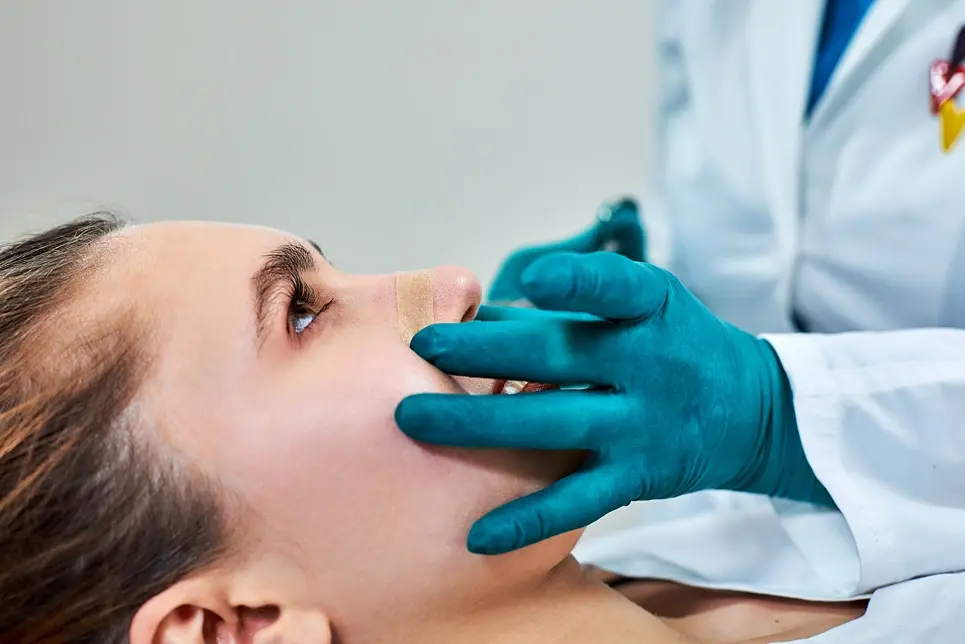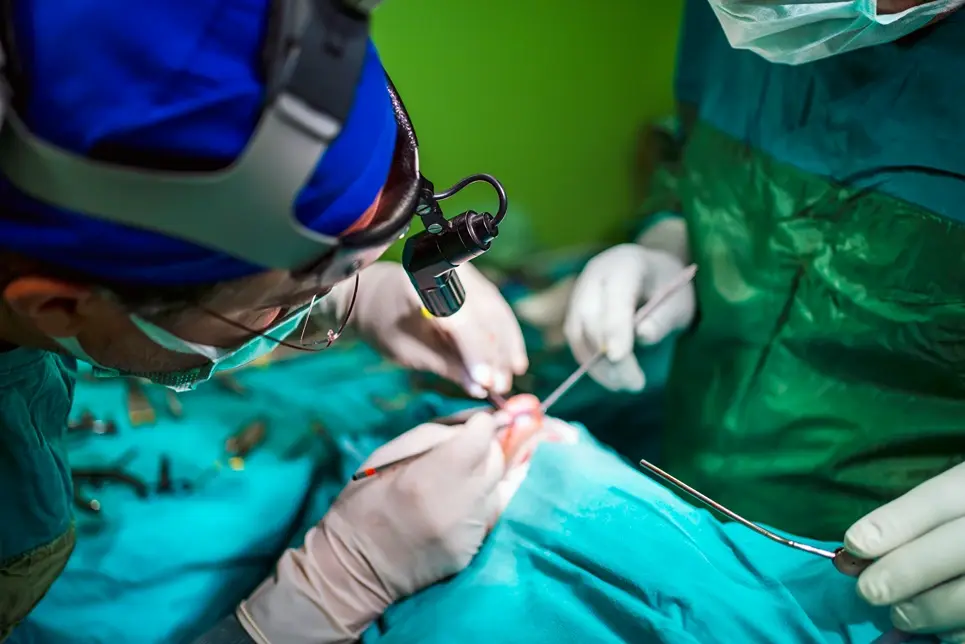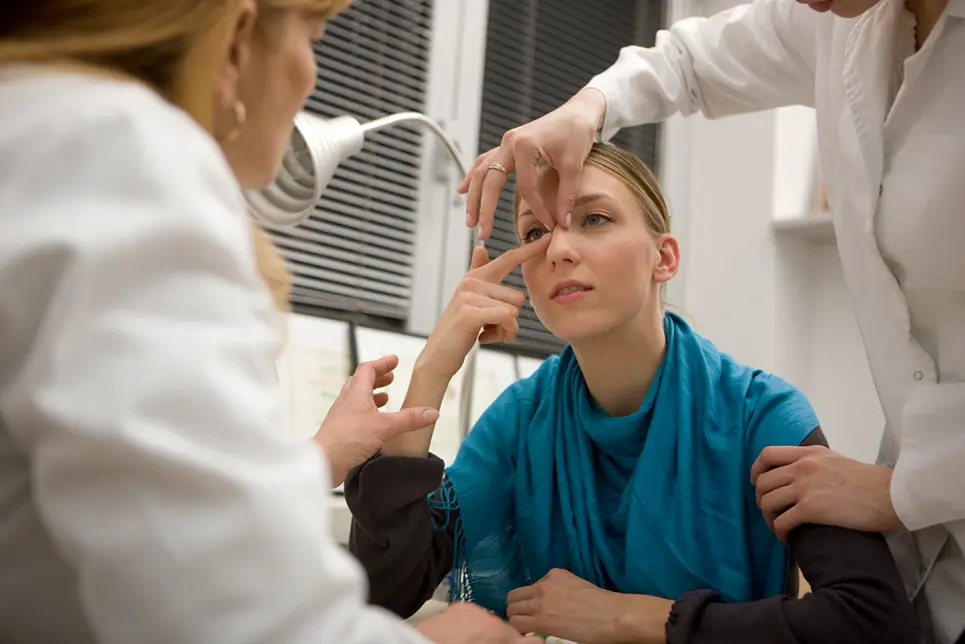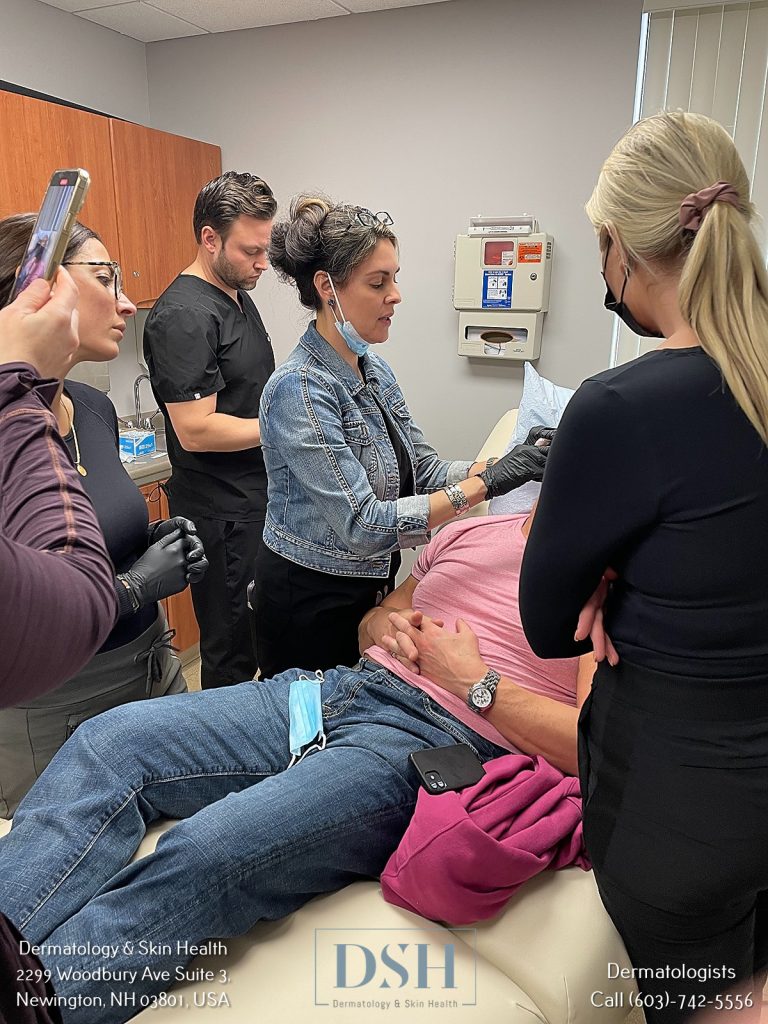


Mohs surgery on the nose with a flap removes skin cancer while keeping the most tissue. After Mohs, the flap uses nearby skin to reshape the nose for the best look and use.
Mohs micrographic surgery is a highly effective treatment for removing skin cancer on the nose. However, the surgery can leave defects that require reconstructive surgery to restore form and function.
Flaps utilize adjacent tissue to repair nasal defects caused by Mohs surgery. This technique provides optimal outcomes for nasal reconstruction after skin cancer removal.
Mohs surgery is considered the gold standard treatment for high-risk skin cancers occurring on aesthetically or functionally sensitive areas like the nose. The Mohs technique removes cancerous tissue layer by layer, with each layer being examined under a microscope until no cancer cells remain. This controlled removal and examination allow maximum preservation of healthy tissue.
The nose is particularly susceptible to skin cancer due to its prominence and constant sun exposure. Approximately 1 in 3 skin cancers removed with Mohs surgery occur on the nose. The minimal margins taken during Mohs ensure optimal nasal preservation. However, the surgery still causes defects that can leave the nose aesthetically displeasing or impaired without repair.
Flaps utilize neighboring tissue to reconstruct nasal defects. The flap retains its own blood supply during transfer, improving healing and viability. Flaps are extremely useful for repairing large, complex defects on the nose. There are several types of flaps that may be used:
The optimal flap is determined by the specific width, depth, and location of the nasal defect.

The forehead flap is the quintessential technique for major reconstruction of the nasal tip, alar rim, or dorsum. It provides ample tissue with excellent color and texture match. The flap is elevated from the forehead and shaped to the nasal defect, remaining attached for blood supply. After a few weeks, the pedicle is divided and inset as needed.
The bilobed flap borrows tissue from the nasal sidewall and tip. This local flap is ideal for medium-sized distal nasal defects. Closure is performed in one stage, making it simpler than the forehead flap. However, the match may not be as ideal.
Nasolabial flaps utilize cheek tissue to repair the alar rim, sidewall, or soft triangle of the nose. The cheek tissue provides a good match for distal nasal reconstruction. This single-stage regional flap is best for small to medium defects.
In rare cases, a free flap from a distant site like the arm, leg or scalp may be required for nasal reconstruction. These transplanted flaps are only used when local and regional options are inadequate.
Several factors guide the decision to use a flap for nasal reconstruction after Mohs surgery:
| Factor | Description |
| Size of Defect | Larger defects generally require flaps to adequately fill missing tissue. Defects larger than 1-1.5cm often need flaps. |
| Depth of Defect | Full thickness defects exposing cartilage and nasal lining necessitate flaps. |
| Location | Central nasal defects, especially on tip, typically require flaps for optimal form and function. |
| Patient Anatomy | Individual nasal features and skin laxity influence repair approach. |
In many cases, small superficial defects can be repaired with local rearrangement of nasal skin. But flap repair is frequently needed for larger, deeper defects or those in aesthetically sensitive areas. An experienced Mohs surgeon can determine the optimal approach.

Mohs surgery is typically performed under local anesthesia. The visible tumor is first debulked before sequential layers are removed and examined microscopically. This process continues until no cancer cells remain. Patients may wait about an hour between stages for tissue analysis.
Once the cancerous tissue is fully removed, the defect is ready for repair. The flap will be designed and elevated based on the particular repair needed. Pedicle flaps may remain partially attached for several weeks before final detachment and contouring. The entire process is usually completed on an outpatient basis.
The initial recovery period after Mohs surgery with flap repair is around 2-3 weeks. Bandages and splints are used to stabilize the flap while it heals. Strenuous activity should be avoided to prevent injury. Some swelling, bruising and discomfort are common initially. Pain medication can help manage any discomfort.
It takes a flap several weeks to fully reconnect its blood supply from the recipient site. Elevation and icing may help reduce swelling as the flap heals. Signs of inadequate blood supply like dusky skin must be promptly reported to the surgeon. Smoking impairs healing and should be avoided.
After the flap is stable, the pedicle is often detached and sculpted for optimal aesthetics. Further healing and revision procedures may be needed over several months to refine the appearance and function of the nose. Skin may be red or numb temporarily. The flap skin will blend in over time.
While uncommon, there are potential risks associated with Mohs surgery and flap reconstruction:
Careful surgical technique and patient compliance with instructions reduce the risks of complications. Report any concerning symptoms to the Mohs surgeon promptly.

Proper wound care and protection of the flap in the weeks following surgery are crucial to optimal healing:
Carefully following the postoperative instructions provided by your Mohs surgeon facilitates optimal healing and recovery after flap repair of the nose.
Mohs surgery allows precise removal of skin cancer from delicate areas like the nose while maximizing healthy tissue preservation. When this surgery results in sizable defects, flaps offer an elegant reconstructive solution. Flaps utilize neighboring tissue to restore the form and function of the nose following cancer removal.
A variety of local, regional and free flap approaches are available depending on the specifics of the defect. An experienced facial reconstruction surgeon will determine the optimal flap technique for each patient. While the process involves some recovery time, flaps provide excellent aesthetic and functional outcomes in skilled hands. With proper patient compliance and follow-up care, flaps offer the best option for nasal reconstruction after Mohs surgery.
Contact Dermatology and Skin Health today to learn more about expert Mohs surgery and flap reconstruction for nasal skin cancers.
If your desired appointment type or preferred provider is unavailable online, kindly call (978) 525-0100 for Peabody, MA and (603) 742-5556 for all New Hampshire locations. Alternatively please feel free to send us your request via the patient portal, or via email at info@dermskinhealth.com
*For medical dermatology appointments in MA please dial (978) 525-0100 or fill out the appointment request form above.